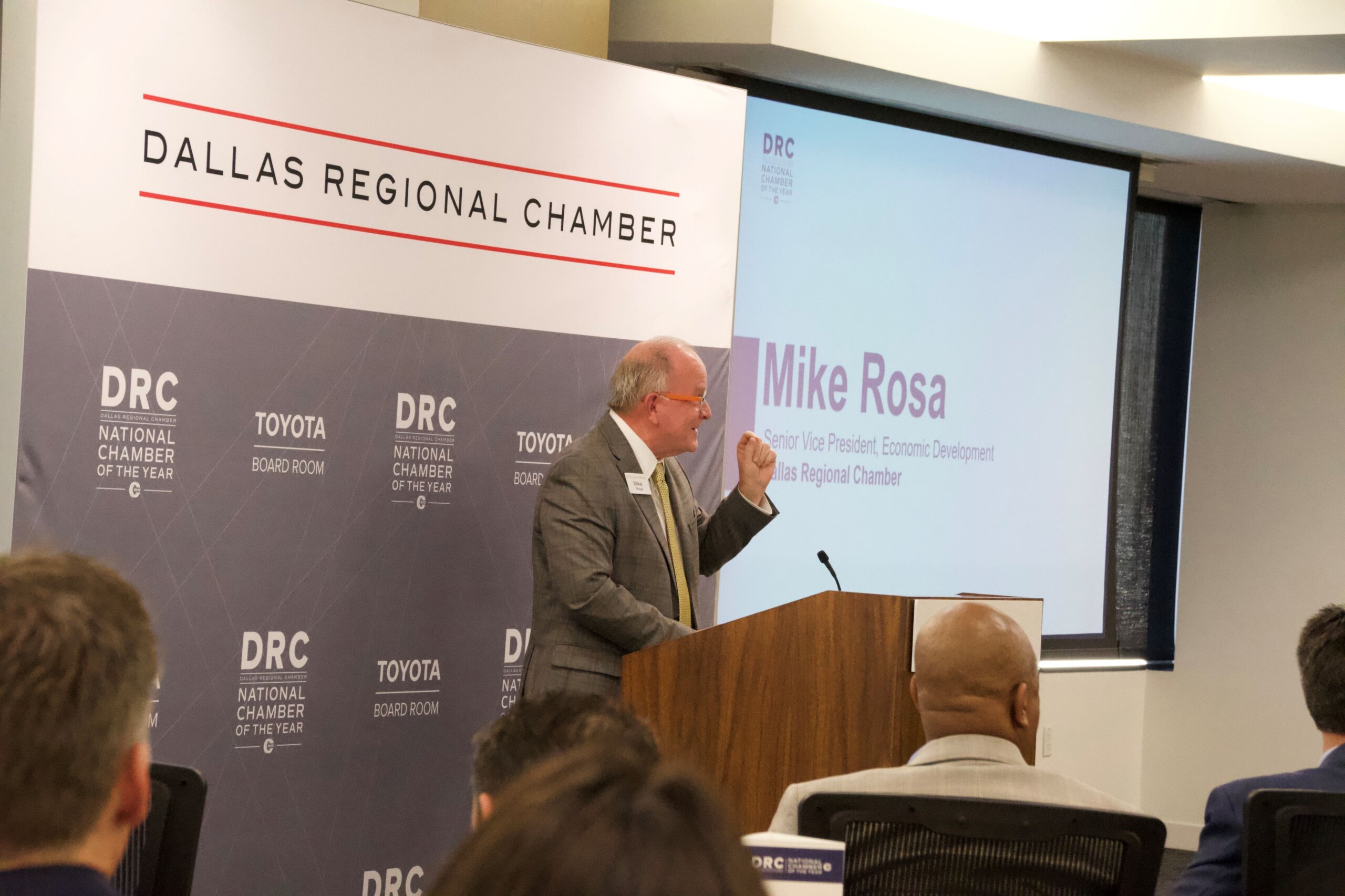By Catie George, Manager, Communications & Storytelling
January 2024 marked the 50th anniversary of the first passenger flight to the Dallas-Fort Worth International Airport (DFW Airport) and kicked off a year-long celebration. For the Dallas Regional Chamber, the airport’s golden anniversary marks half a century of one of the region’s most impactful economic engines.

The region’s largest, the country’s second busiest, and the world’s third-largest airport is vital to all of North Texas, directly and indirectly supporting 634,000 jobs and $38 billion in payroll. In addition, DFW Airport travelers added approximately $24 billion to the local economy, which resulted in more than $5 billion in state and local tax revenues. DRC Senior Vice President of Economic Development Mike Rosa added that the true economic impact is likely more.
“It is hard to measure the penetrative impact of something so ingrained in our region. It would be like trying to estimate the impact of our geographic location,” said Rosa. “The impact of DFW Airport is enormous, and I suspect even greater than what can be estimated or shown in an economic impact report.”
In 1964, the Civil Aeronautics Board ordered Dallas and Fort Worth to consider a joint airport. With the active participation of the DRC and Fort Worth Chamber of Commerce, the DFW Airport was agreed upon. To build the airport, voters needed to, and ultimately did, approve a $7.5 million bond package for land purchases – a crucial step that materialized due to the DRC’s strong championship of the package.
“They gave us 17,000 acres in the middle of nowhere at that point. And 60 years ago, aviation was a slice of what it is today,” said CEO of DFW International Airport Sean Donohue at a DRC Tomorrow Fund Investor Breakfast. “And for them, for those visionary leaders, to say, we’re going to give you all this land, was an extraordinary decision that enabled the airport to now become the second busiest airport in the world.”

Ten years later, in 1974, DFW Airport opened to airline traffic. The airport initially had four terminals, three runways, and 66 gates on 17,500 acres—the largest airport in the world at that time.
Four years later, the DRC set out to improve the taxi services in the region, especially those closer to the airport, because many visitors relied on taxi cabs as their primary source of transportation. The DRC’s work in this area also helped address broader transportation concerns.
In 1982, DFW Airport lost its largest operator, Braniff Airlines, and 66 landing slots. After this setback, the DRC began to get involved with the Federal Aviation Administration (FAA) regulations. DRC board members and staff successfully lobbied the FAA to return and reallocate 50 of those slots to other operators.
At the turn of the century, DFW Airport opened an international cargo center and a perishables facility. That same year, DFW was the fastest-growing international port of any kind due to its superior geography and international facility warehouses.
“In the 36 years I’ve been in economic development in this region, there has been no single factor that has been more consistently responsible for the economic growth of this region than DFW Airport,” said Rosa. “It’s invaluable to companies considering moving here, and it’s a huge selling point. It’s also great for companies already here looking to expand their business.”
Today, DFW Airport hosts 171 gates flying to 257 destinations, services 27 airlines, has five terminals, and averages over 200,000 daily passengers.

“In 2019, we set a record at DFW of 73 million customers. Last year, we had 82 million. So, that’s 15% higher than our previous record,” said Donohue. “By the end of the decade, we forecast 100 million. I don’t think it’s out of the question.”
Notably, DFW Airport was the first North American airport to achieve carbon-neutral status and is the largest carbon-neutral airport in the world. This commitment to sustainability was recognized in 2020 when the airport received a United Nations Global Climate Action Award.
In 2022 and 2023, DFW Airport was recognized as the best in the country for its customer service.
“As DFW Airport celebrates its 50th anniversary, the DRC celebrates alongside the airport by recognizing the history, impact, and success of the past as we look forward to the next 50 years.
“We already have the plan for the next 20 years that will allow us to keep growing, and that’s really critical for us. We can never be a constraint for this region,” said Donohue. “We always have to be ahead of the growth, but we’ve got to do it in a reasonable manner and do it in a smart manner, in a cost-effective manner, and that’s what we plan on doing.”